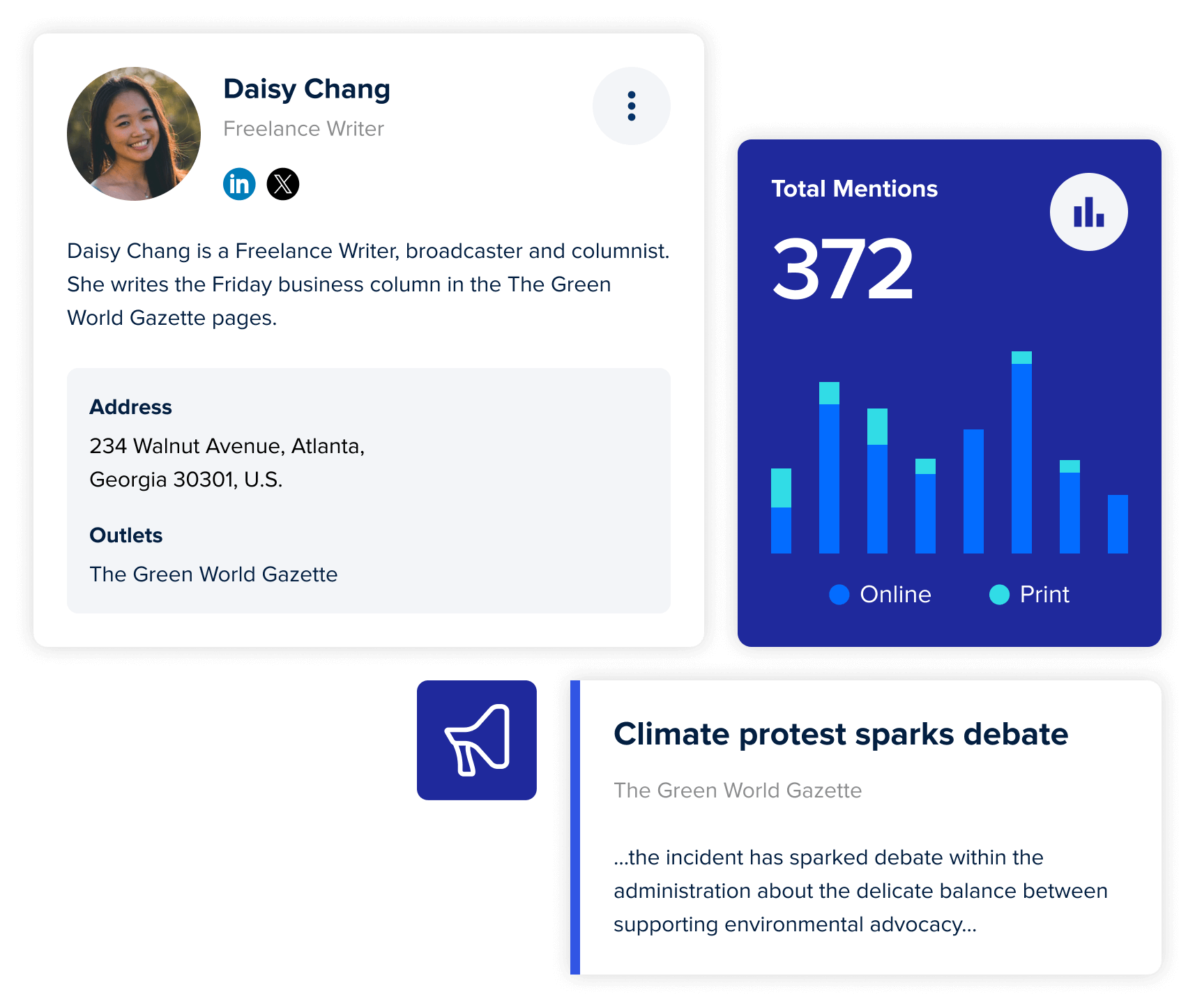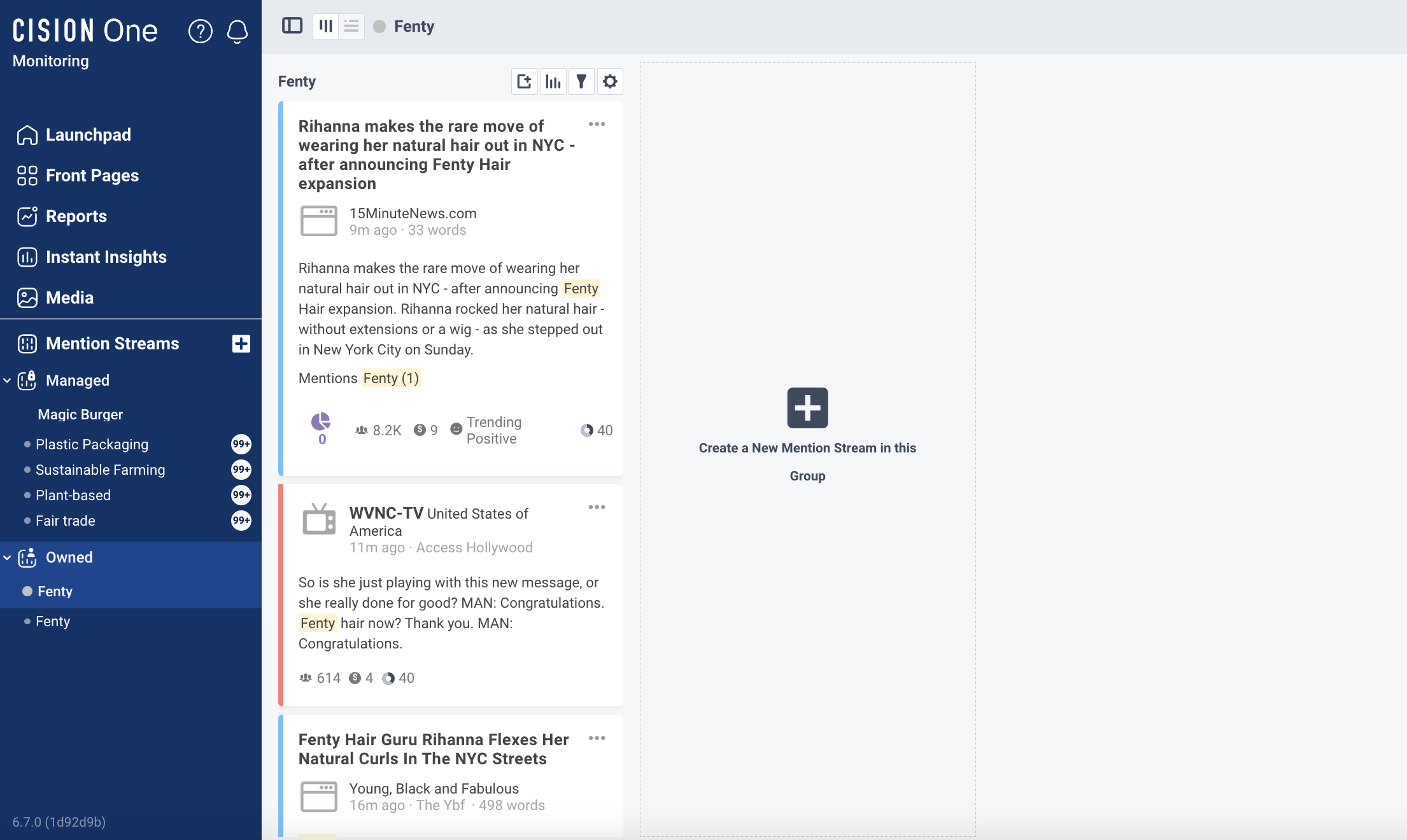The following article was written by guest contributor Julia Burns for BuzzSumo. It has been updated and edited with permission by Cision’s content team. Follow Julia on LinkedIn.
You scan the paper and search the website and there it is…your brand or client’s name. And then again. And again and again. BOOM! Newsjacking success!
You’ve made the nationals, your industry media, and an influencer has mentioned your client with an on-point quote about a trending story. There’s no feeling like it for a passionate public relations or marketing pro.
Sounds easy enough, doesn’t it? Write an email, send it out, and maybe make some phone calls – afraid not.
There’s a fine art to newsjacking, and I should know: I started my career as a broadcast journalist working in newsrooms across the UK and answering those pesky PR calls and emails. Then I made the switch to PR, becoming the person on the other end of the email, selling in my client’s stories.
I’ll get to what I’ve learnt from both sides of the newsjacking process, and my top do’s and don’ts in a sec. But first let’s cover off a few of the basics…
What is Newsjacking?
Newsjacking is immediately reacting to a news story with expertise to gain attention, achieve PR coverage and capitalize on a developing trend.
Let’s unpack that definition.

Why Try Newsjacking?
As well as the usual advantages of PR and content marketing – building your brand, credibility, SEO and thought leadership authority – newsjacking shows consumers that a brand has its finger on the pulse of what matters.
It’s also a potential quick win, especially in comparison to an in-depth marketing campaign.
What's an Example of Newsjacking?
Heinz capitalized on high demand generated by the Barbie movie via a PR stunt, coordinated alongside Mattel, to create a limited edition “Barbiecue” sauce.

Heinz newsjacking example sourced by Campaign Inspiration
As a result of this creative product development, Heinz and Mattel benefitted from coverage in major news publications including Bloomberg, The Independent, CBS News, Yahoo, Better Homes and Gardens, and the Daily Record.
How to ‘Do’ Newsjacking
Let’s look at each of the four stages of newsjacking in turn:
- Stage 1. Before
- Stage 2. Be aware
- Stage 3. Breaking
- Stage 4. Beyond
Stage 1. Before
To react fast, with the right story, preparation is everything.
Set Your Strategy
Newsjacking might not sound like the most strategic PR activity, but it can in fact help you land a key message in a swathe of media – if careful thinking has been done in advance.
- What data do you have available?
- What are the messages you or your client need to communicate?
- What are the topics you/they can speak on with authority?
Know Your Objective
At this point you will also be thinking about what you’re looking to get out of newsjacking – is it increased brand awareness? News syndication? SEO uplift? Building your authority as a thought leader? What PR metrics will you be looking at?
Your objective will probably have you thinking about how you want to be referenced.
If you’re intent on a link to a specific page other than the homepage, research beforehand to understand the publishers’ linking style. If your desired publication won’t drop a specific link to a specific page for you, a homepage link can still drive valuable awareness and SEO value.
Google is already able to make intelligent connections between brands and websites, even without links. Newsjacking and digital PR is therefore going to become even more important!
Know Your Media
Constantly read, listen to, and watch news outlets where you want to achieve coverage. One way of doing this is by subscribing to specific newsbeats and journalists. That way you’ll be notified every time they publish an article.
Build relationships with key journalists ahead of time, so they know what you can offer, but also be mindful that breaking news can be covered by writers on news desks, with little expertise in your specific area.
Think Practically
Make sure that when a news story breaks, you will have everything you could possibly need at your fingertips:
Prepare media lists including emails, phone numbers and X/Twitter handles for:
- Online, print, and broadcast news desks
- Specific journalists for each topic
A great tip for discovering this information is to use CisionOne’s Media Database, which give you the journalist’s:
- Name
- Location
- Social media details
- Bio
- Recent articles
- Media outlets

This journalist information can enhance the value you bring to the table, helping you create relevant content to share with the right journalists and better personalize your PR pitch.
- Work out the chain of command: If you’re pitching commentary from a spokesperson, who will stand in for them if they are out of action?
- Determine referencing: Decide how you want to be referenced and linked to, so you can request this in your communications with a journalist.
- Media pack: Ensure you have easy access to multimedia elements, like high quality images and photographs, which are clearly labelled and easy to find. If you’re using a spokesperson in a broadcast situation, consider preparing a video of them to prove that they make an excellent interviewee.
- Biographies: Put together detailed draft biographies for any spokespersons, which can be adapted and shortened for each newsjacking pitch. Include information such as job role, previous experience, qualifications, media and conference appearances, tenure, and time in the industry. (Pro tip: For broadcast opportunities, it can be useful to include the pronunciation of a spokesperson’s name.)
- Author and brand details: Keep the following spaces up to date:
- About Us page on brand/client website
- Author page
- Social media profiles
If you want a journalist to link, make it easy for them to do so. Keeping the above spaces up to date will reinforce your brand/spokesperson’s expertise and E-E-A-T, making it more likely for readers to trust their knowledge, and for Google to surface them in the search results.
Prepare Spokespeople for Broadcast
If you’re using a subject matter expert for quotes and commentary, prep them in the best way. Are they a novice or a complete pro? Would they like to talk through potential questions and tricky issues, or would they prefer to have your advice written down and to take it in slowly? Always make sure they know about the program, the journalist, and the opportunity.
Test and Perfect
Make sure everyone knows their role, both in your team and within the client organization, from the marketing manager to the spokesperson, to their production assistants.
If you’re using a spokesperson to support your newsjacking, do dress rehearsals to make sure they are prepared. Equally, if you’re pitching data for your newsjacking opportunity, get quality assurance support to make sure your findings are watertight.
Stage 2. Be Aware
Hijackable news stories don’t land in your lap. Monitoring the news is a never-ending job. Always be on high alert:
- Have a TV on a news channel running in the background.
- Listen to radio stations and programs whenever possible.
- Use tools like Google Alerts to find out about news as soon as it happens, spot trends and get a daily digest so you don’t miss a beat.
- Set up a PR calendar with key dates across the year, and keep adding to it so you can draft comments in advance.
Stage 3. Breaking
HERE IT IS! You’ve spotted a breaking news story that you or your client can speak on with authority. It’s time to put into action everything you’ve prepared.
Get your team together. Work out the angle. Divide and conquer. Who will:
- Contact the client to let them know about the opportunity?
- Sign off the idea?
- Find out if a subject matter expert is available?
- Collate and analyze any data?
- Create/design/shoot any assets?
- Sign off commentary?
- Request extra insights?
Then prepare two types of newsjacking pitch:
A generic email for news desks which will hopefully be read by whichever journalist is working on the story that day.
An email you can adapt for individual journalists explaining why you think they, specifically, will be interested in featuring your story e.g. if you have seen them write on the topic before or have spoken to them about your client.
5 Parts of a Killer Newsjacking Pitch
- A compelling subject line stating the news story and what you are offering.
- ️A quote that either supports what journalists are likely to say, or takes the story on.
- A concise, highly relevant biography of any subject matter expert (SME).
- An offer to interview a SME, along with a few bullet points of key topics.
- An accurate way to get in touch.
Make Sure Your Pitch is Relevant
Newsrooms across the country look very different to what they did even five years ago; Journalists are increasingly working from home, they’re carrying out interviews over video rather than face-to-face, and they’re getting even more PR pitches. The fundamentals of newsjacking remain the same but, now more than ever, only the best pitches sent to the right journalists at the right time will cut through.
Tracking Your Coverage
Once you’ve done your outreach, it's time to track all relevant mentions around your brand, and the keywords relevant to your story. One way to do this is to create a mention stream in a media monitoring tool like CisionOne.

This will ensure you never miss a mention and give you insights into any earned media coverage generated.
Stage 4. Beyond
Congratulations, you’ve done some first class newsjacking! Now it’s time to make the most of that coverage, and repurpose any content that hasn’t been picked up, to make the most of the opportunity.
If your newsjacking was successful and you achieved coverage in your key publications, can you:
- Launch an email or social media campaign highlighting your data/research/commentary?
- Write an article including a link to any coverage?
- Add a slide to a sales deck showing publication coverage to demonstrate credibility?
- Create a case study showcasing your PR success?
If your newsjacking didn’t result in coverage, what can you do to make sure that time wasn’t wasted? Could you:
- Repurpose your pitch contents into a blog?
- Reach out to publications with longer lead times offering an opinion piece?
- Predict any future opportunities when you could revisit the topic (e.g., an awareness day or anniversary)?
Consider how you could improve your chances of success next time – such as looking at which brands did get quoted, and what marked them out.
Newsjacking Do's and Don’ts
Do:
- Make journalists’ lives easier. If you’ve secured an opportunity, keep them up to date on what is going on.
- Quality check. Especially if you’re working with a new dataset, or a new spokesperson.
- Tailor your pitch to journalists and influencers. Spend the time getting to know journalists so you can work out the best approach. Many prefer an email pitch to telephone or social, especially as a first contact.
Don’t:
- Ask if a journalist has received your email. Journalists do tend to read their emails and will get back to you if what you have sent is relevant.
- Forget to cut to the chase. Journalists are always busy and working against deadlines.
- Request interview questions or copy approval. You’re not going to get it on a fast turnaround story.
- Offer a spokesperson who is not available. Nothing annoys journalists more.
It may sound fast and fun (and during those breaking news moments, it really is), but successful newsjacking requires the right thinking and tools to be in place in advance.
Only then can newsjacking achieve its truly brand-altering potential.
If you want to get better at riding the wave of trend stories, CisionOne is here for you – speak to an expert today.







